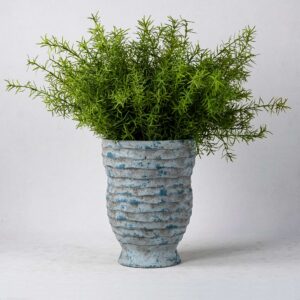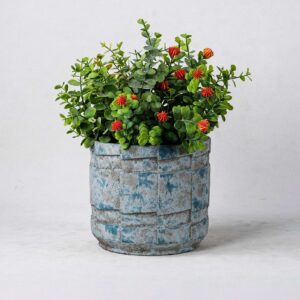Na jardinagem e na decoração da casa, a escolha dos vasos para plantas desempenha um papel importante na estética e na saúde das plantas. Vasos de fibrocimento para plantas e os vasos de cerâmica para plantas são duas escolhas comuns mas muito diferentes, cada uma com as suas vantagens e cenários de aplicação únicos, adequados a diferentes estilos de design, condições climáticas e tipos de plantas.
O que é um plantador de fibrocimento?
O fibrocimento é um material compósito feito de cimento, areia e fibras naturais de celulose. O material é leve e resistente, o que o torna ideal para jardineiras modernas. É frequentemente utilizado na arquitetura contemporânea e no design paisagístico devido à sua durabilidade e ao seu aspeto elegante e minimalista.
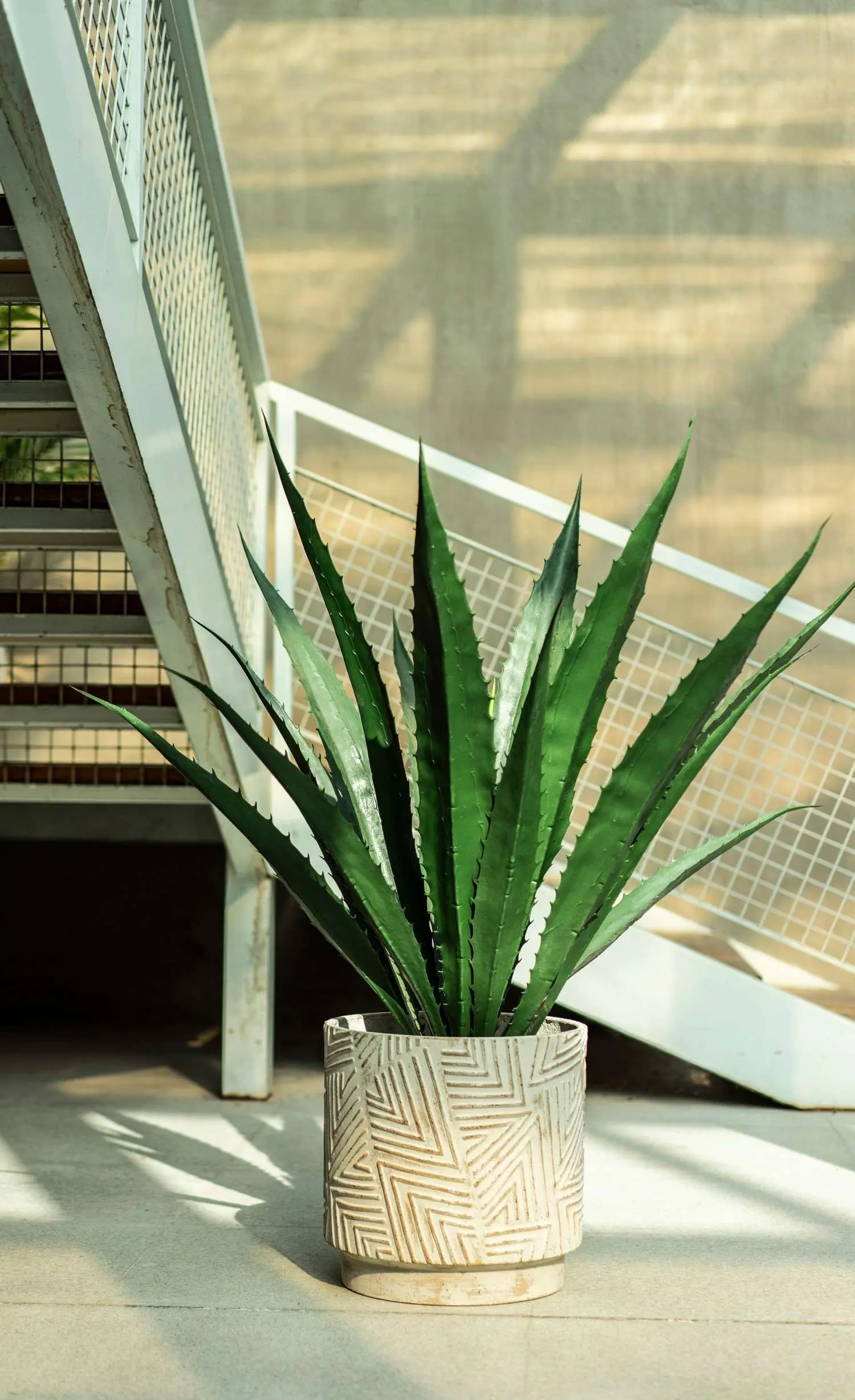
Composição do material
- Cimento: Serve como aglutinante de base, proporcionando resistência estrutural e peso.
- Fibra: Este é o ingrediente chave e normalmente inclui:
1. Fibras de madeira/celulose: Derivados da madeira ou de plantas, proporcionam flexibilidade e resistência a fissuras.
2. Fibras sintéticas: As fibras de polipropileno, por exemplo, aumentam ainda mais a resistência ao impacto e a durabilidade.
3. Fibras minerais: Por vezes, acrescentou. - Outros aditivos: Pode incluir areia, sílica de fumo, etc., para melhorar o desempenho, o aspeto ou o processamento.
Estes ingredientes são misturados com água, formados através de um processo específico (como a moldagem por prensagem ou a pasta) e depois curados e endurecidos.
Principais caraterísticas das jardineiras de fibrocimento
- Extremamente durável: Os vasos de fibrocimento têm uma excelente resistência ao gelo, às intempéries e aos raios UV. Não se partem tão facilmente como os vasos de barro, nem envelhecem e se tornam frágeis ou desbotam ao sol como os vasos de plástico. É adequado para utilização no exterior e tem uma longa vida útil.
- Peso moderado: Os vasos para plantas de fibrocimento são muito mais leves do que os vasos de betão maciço ou os vasos de barro pesado, mas têm uma sensação de peso maior do que os vasos de plástico, não são facilmente derrubados pelo vento e têm boa estabilidade.
- Boa permeabilidade ao ar: O material de cimento tem uma certa estrutura microporosa, que favorece a evaporação da água e a circulação do ar no solo, promove o crescimento saudável das raízes e evita o apodrecimento das mesmas.
- Textura de boa aparência: Apresenta normalmente um tom cinzento mate natural, com uma textura delicada e um toque de alta qualidade. Muitos produtos imitam a textura e a cor da pedra, do betão ou do barro, e o aspeto é muito bonito, moderno ou retro. O seu aspeto diversificado torna-o a primeira escolha para um design de jardim moderno e simples.
Coisas a considerar
- Peso. Embora seja mais leve do que o betão sólido, continua a ser pesado em comparação com os vasos de plástico, especialmente os vasos grandes, e não é fácil de deslocar.
- Preço. Normalmente mais caros do que os vasos de plástico normais, mas menos do que os vasos de cerâmica de alta qualidade ou os vasos de pedra.
O que é um vaso de cerâmica?
Vasos de cerâmica para plantas são feitos de barro natural que é moldado, vidrado e cozido num forno. Apresentam-se numa variedade de acabamentos, desde superfícies lisas e brilhantes a obras de arte pintadas à mão. Os vasos de cerâmica para plantas são frequentemente utilizados no interior e em espaços decorativos de jardim devido à sua beleza e versatilidade.
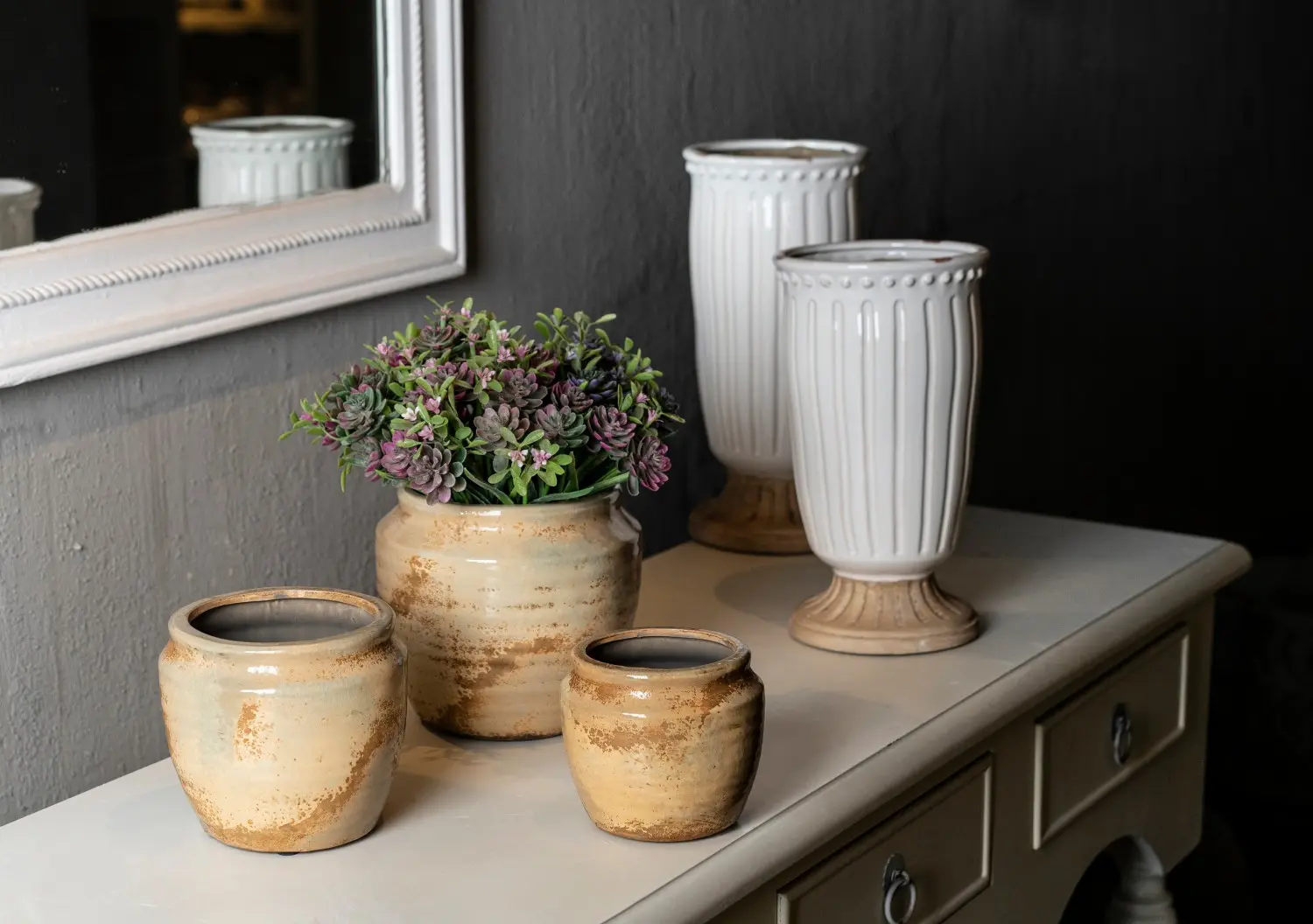
Materiais
- Principais matérias-primas: argila natural
Processo de produção
- Moldagem: A argila é moldada na forma pretendida através de lançamento (manual ou mecânico), moldagem por deslizamento, moldagem por compressão, etc.
- Secagem: O corpo formado deve ser bem seco.
- A disparar: Colocar num forno e cozer a altas temperaturas (normalmente acima de 1000°C). Este processo faz com que a argila sofra alterações físicas e químicas, tornando-se dura e densa.
- Processo de envidraçamento/decoração:
Durante o processo de cozedura, os vasos de cerâmica para plantas podem ser decorados através de diferentes técnicas. A técnica mais comum é a vidragem, que consiste em aplicar um esmalte vítreo na superfície do corpo (antes da cozedura ou da recozedura) e, após a cozedura a alta temperatura, forma-se um efeito de superfície liso, impermeável, brilhante ou com uma textura especial.
Outra opção é mantê-lo no estado não vidrado (bisque), cozendo diretamente na forma sem vidrar, mostrando a textura mate original e os tons terra da própria argila ou porcelana.
Além disso, o corpo pode ser pintado ou esculpido, e a decoração pode ser feita antes ou depois da cozedura para acrescentar uma beleza pictórica ou padrões tridimensionais ao vaso.
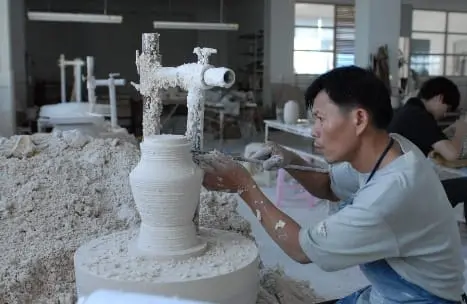
Principais caraterísticas dos vasos de cerâmica
- Bela e diversificada: A maior vantagem dos vasos de cerâmica para plantas é a sua rica expressão artística. As cores dos vidrados estão sempre a mudar e as formas podem ser tradicionais ou modernas. Podem ser perfeitamente integrados em vários estilos de casa e de jardinagem e têm fortes propriedades decorativas.
- Estável e pesadoA cerâmica tem uma densidade elevada e os vasos feitos com ela são pesados, proporcionando uma boa estabilidade e não são facilmente derrubados pelo vento, o que os torna adequados para plantar plantas mais altas.
- Boa permeabilidade ao ar:Os vasos de cerâmica bisqueada não vidrados têm uma boa permeabilidade ao ar microporoso. Este facto é muito benéfico para a saúde das raízes de algumas plantas.
- Não poroso quando vidrado: Os vasos de cerâmica vidrada retêm bem a humidade, o que é útil para as plantas que gostam de água.
Coisas a considerar
- Preferência por interiores: Os vasos de cerâmica são geralmente mais adequados para utilização no interior ou numa área exterior abrigada, uma vez que as condições climatéricas extremas podem provocar fissuras nos vasos.
- Peso: O seu peso torna-os difíceis de deslocar, especialmente quando estão cheios de terra e plantas.
- Drenagem: Alguns vasos de cerâmica não têm orifícios de drenagem, pelo que poderá ser necessário um cuidado adicional aquando da rega.
Vasos de fibrocimento vs. vasos de cerâmica
| Caraterística | Fibra de cimento | Cerâmica |
|---|---|---|
| Peso | Leve | Pesado |
| Durabilidade | Alta (resistente às intempéries) | Moderado (frágil em temperaturas negativas) |
| Conceção | Minimalista, moderno | Colorido, artístico |
| Retenção de humidade | Moderado (respirável) | Elevado (especialmente se for envidraçado) |
| Utilização ideal | Exterior/paisagem | Jardins de interior/decorativos |
| Personalização | Superfície pintável | Vasta gama de acabamentos e padrões |
Qual deve escolher?
- Opte pelo fibrocimento se estiver à procura de algo moderno, respirável e durável para paisagens exteriores ou jardins de varanda.
- Escolher cerâmica se quiser fazer uma declaração de design dentro de casa, ou se estiver a cultivar plantas que se desenvolvem com humidade constante.
Para muitas casas e jardins, a utilização estratégica destes dois materiais pode criar um aspeto variado e em camadas - o fibrocimento pode ser utilizado para árvores maiores e canteiros de flores exteriores, enquanto os vasos de cerâmica para plantas podem acrescentar cor e elegância a um interior ou pátio.
Sobre a SANTAI
A SANTAI é uma empresa líder no sector de interiores e exteriores fabricante de cerâmicaA SANTAI é uma empresa de produção de vasos para plantas, especializada na conceção e produção de vasos de alta qualidade para o mercado grossista mundial. Com ênfase no trabalho artesanal e na durabilidade, a SANTAI oferece uma vasta gama de vasos para plantas de fibrocimento por atacado e vasos de cerâmica para plantas por atacado que combinam beleza moderna com funcionalidade prática.
Fornecemos soluções profissionais para uma variedade de projectos de decoração de interiores, paisagismo exterior e jardins comerciais, e somos o seu parceiro de confiança para a aquisição de vasos para plantas a granel. Bem-vindo a contactar-nos.
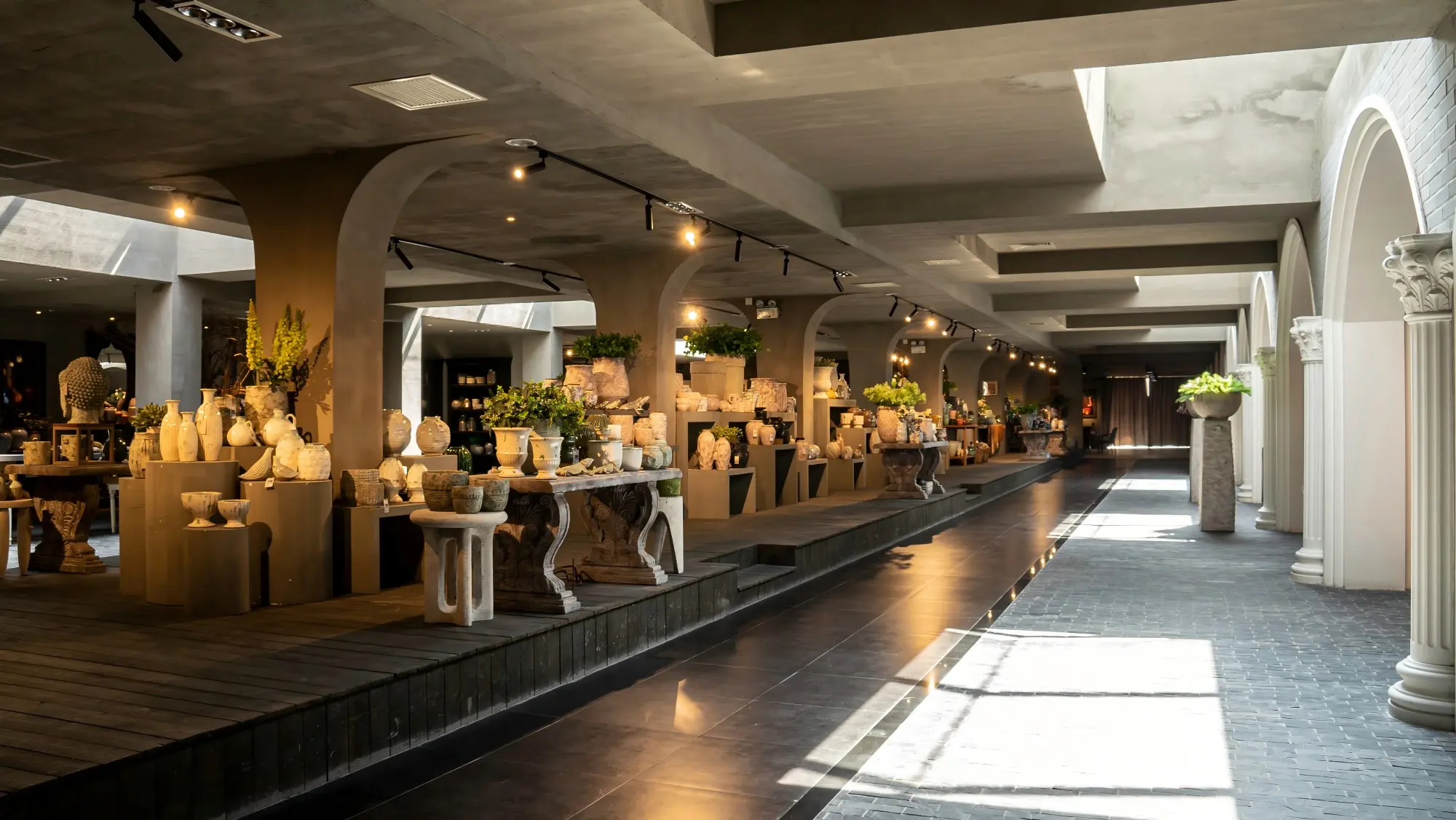
A nossa série de vasos para plantas em fibrocimento
SANTAI oferece uma vasta gama de vasos para plantas em fibrocimento com vários acabamentos de superfície para se adaptar a diferentes estilos e ambientes.
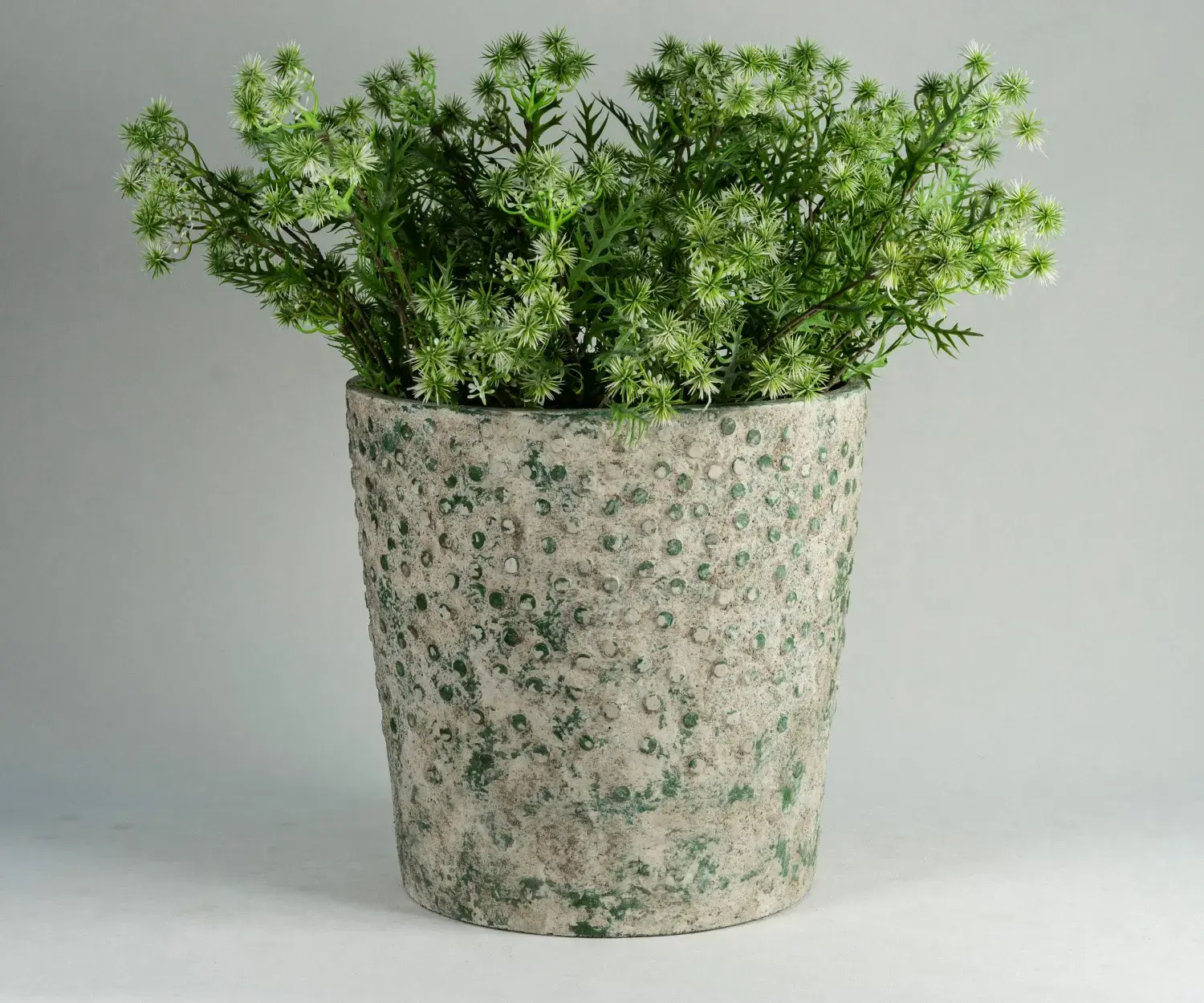

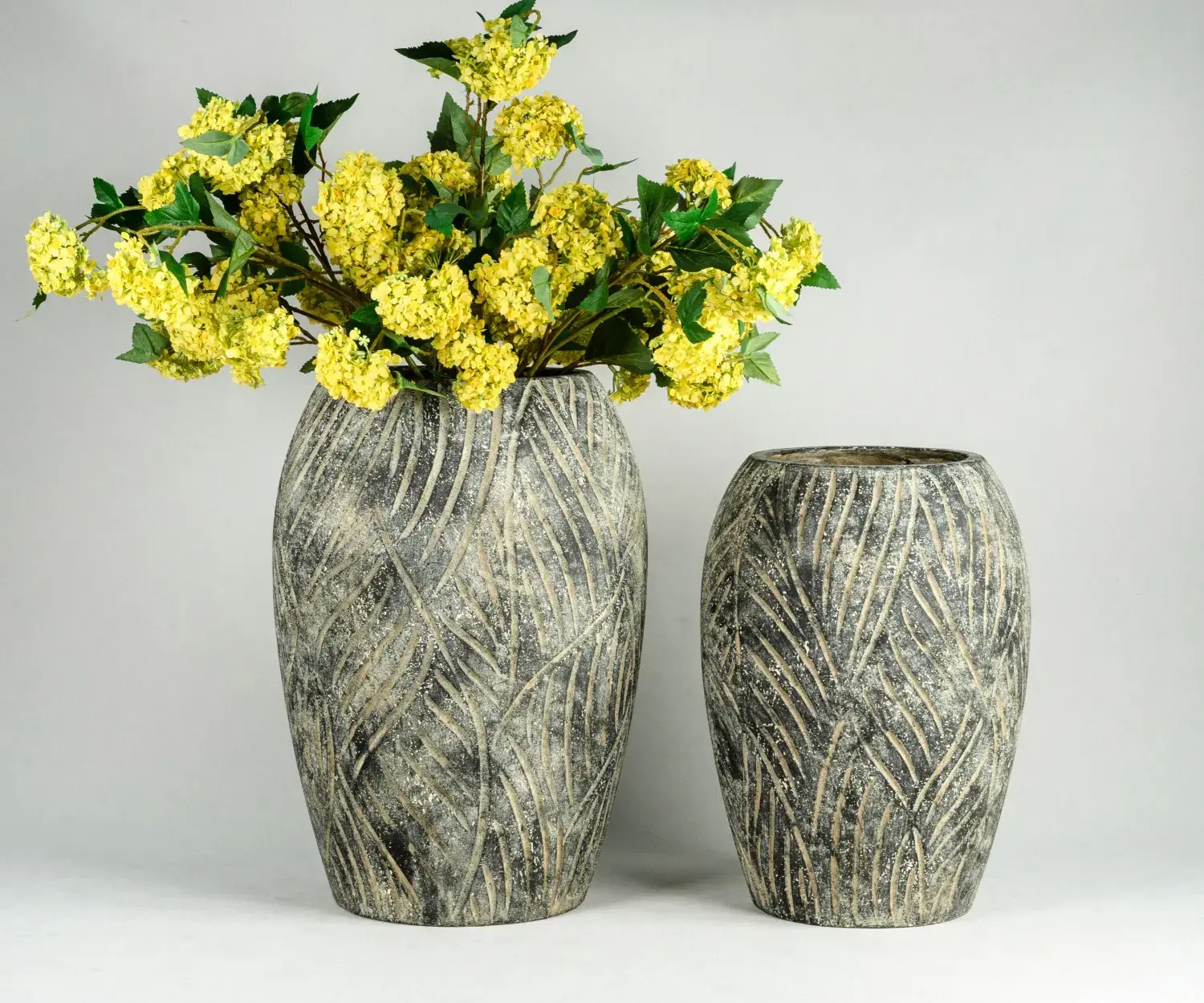
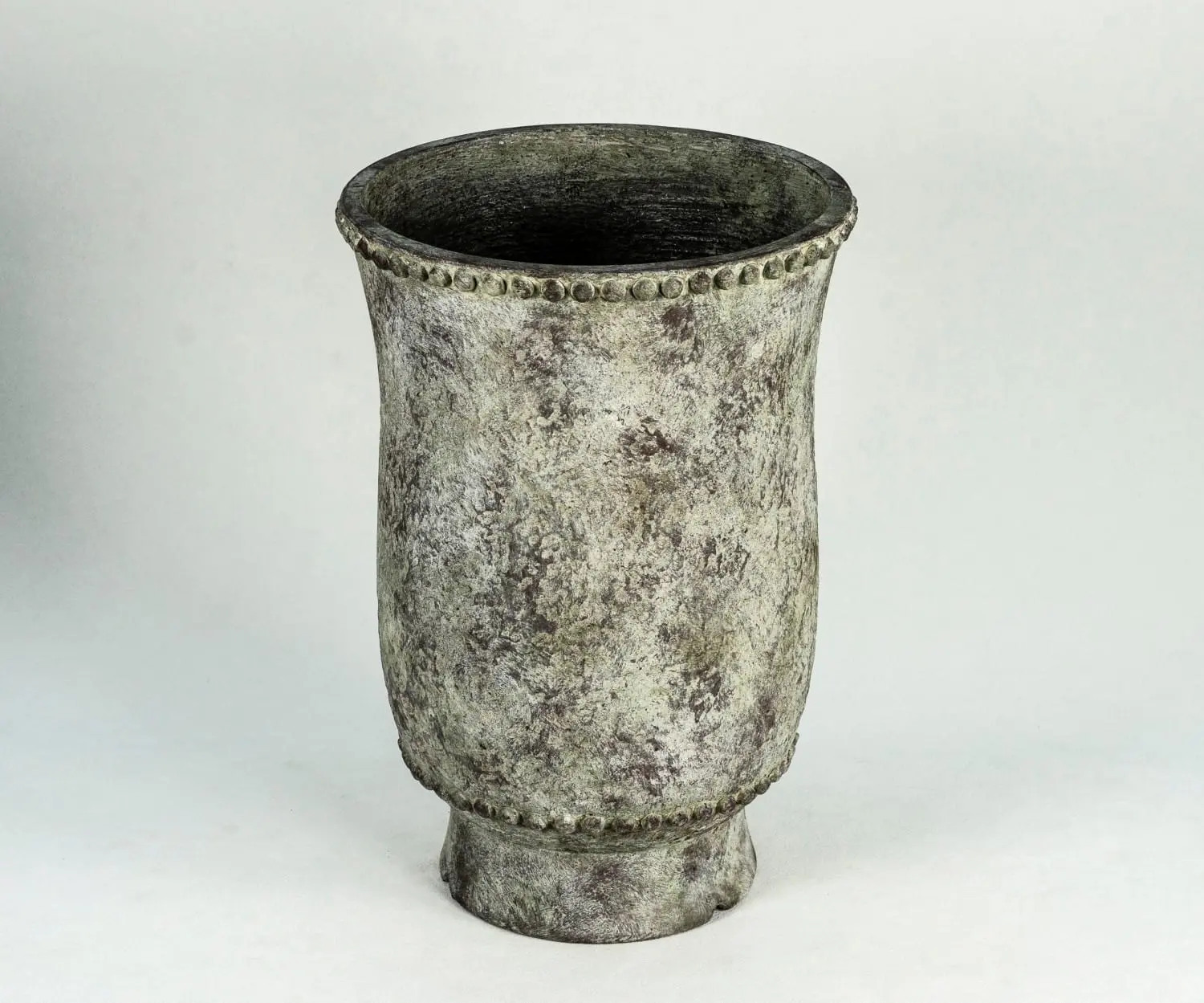
A nossa série de vasos de cerâmica para plantas
A SANTAI oferece uma vasta gama de vasos de cerâmica para plantas em vários estilos para se adaptar a diferentes necessidades de decoração.
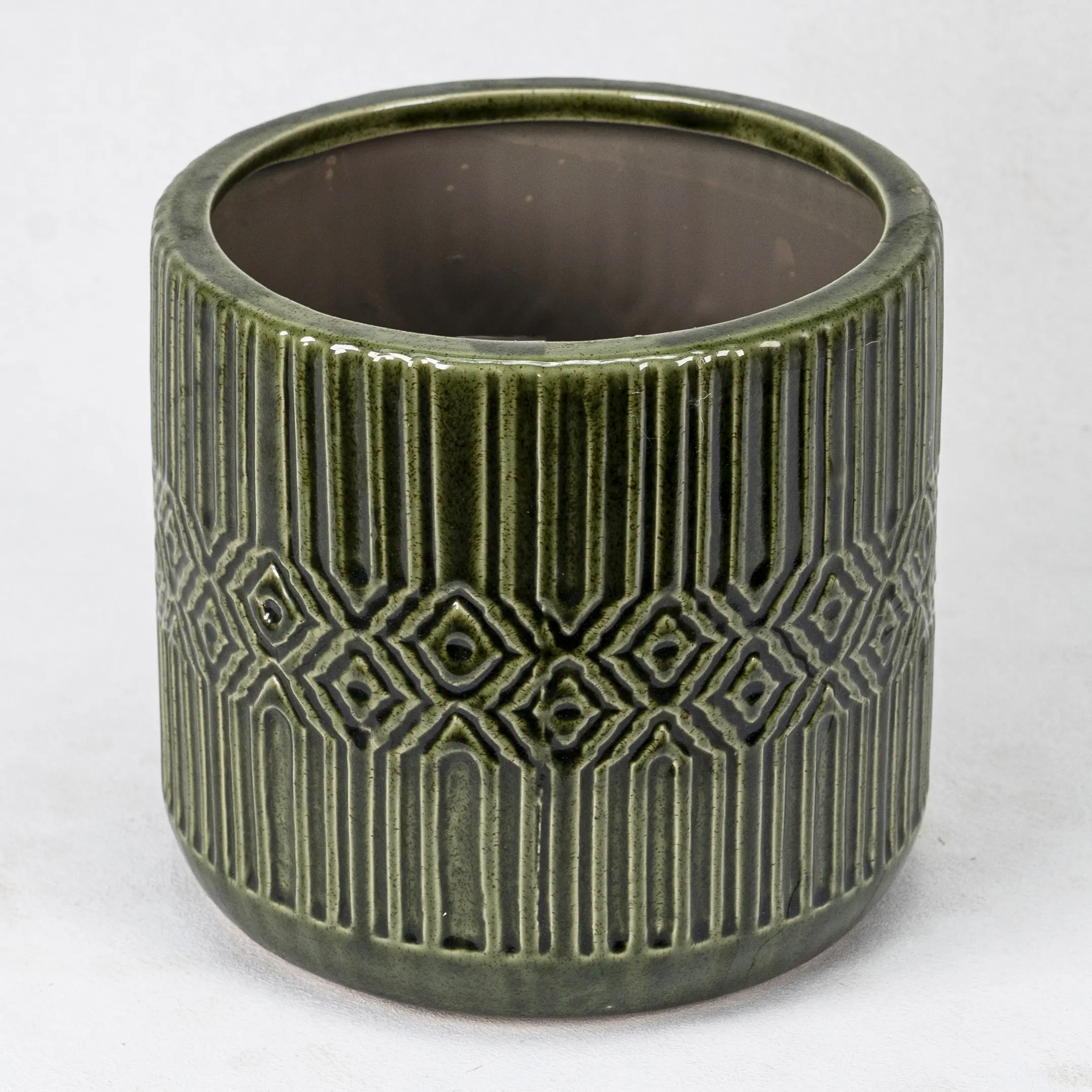
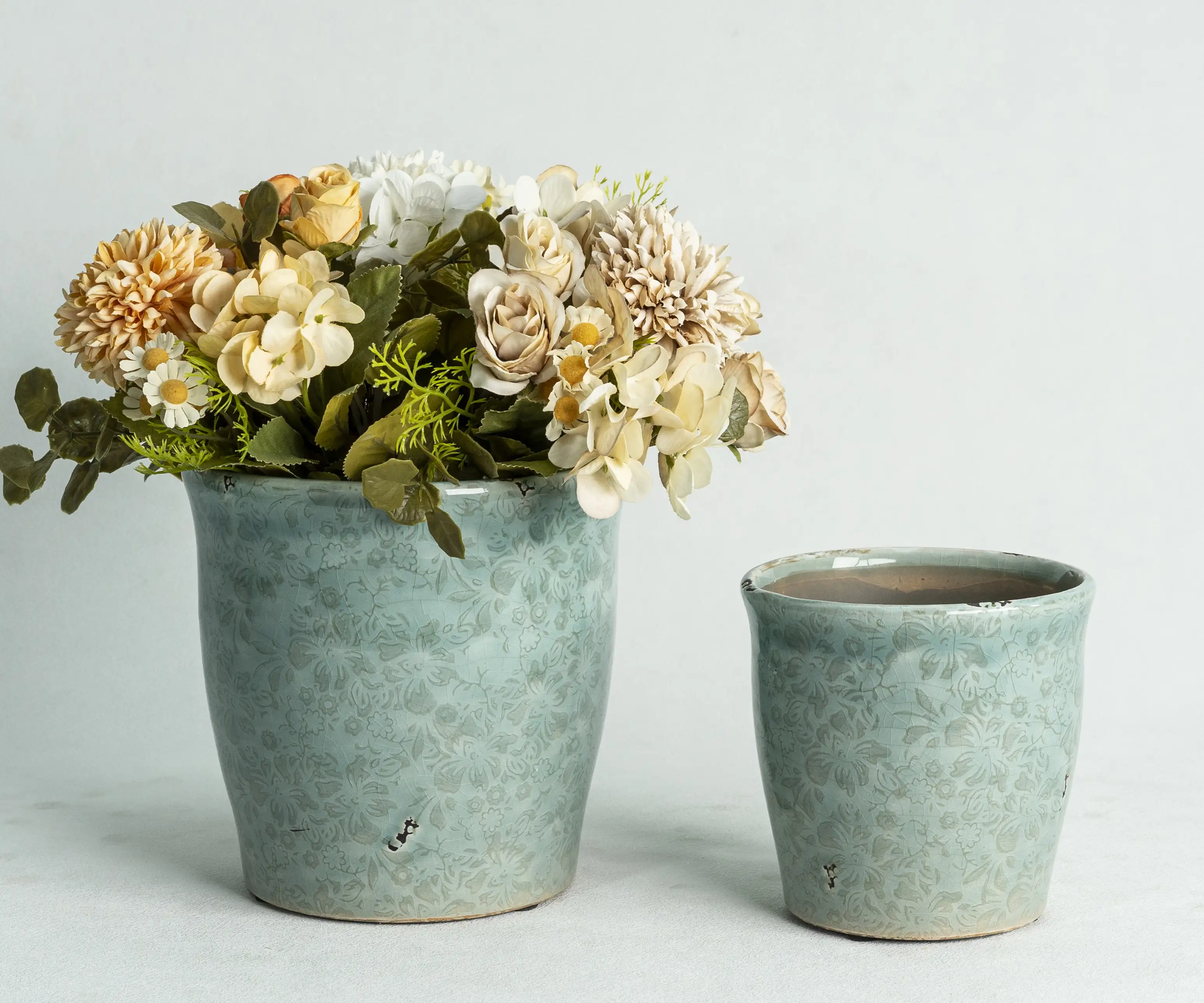

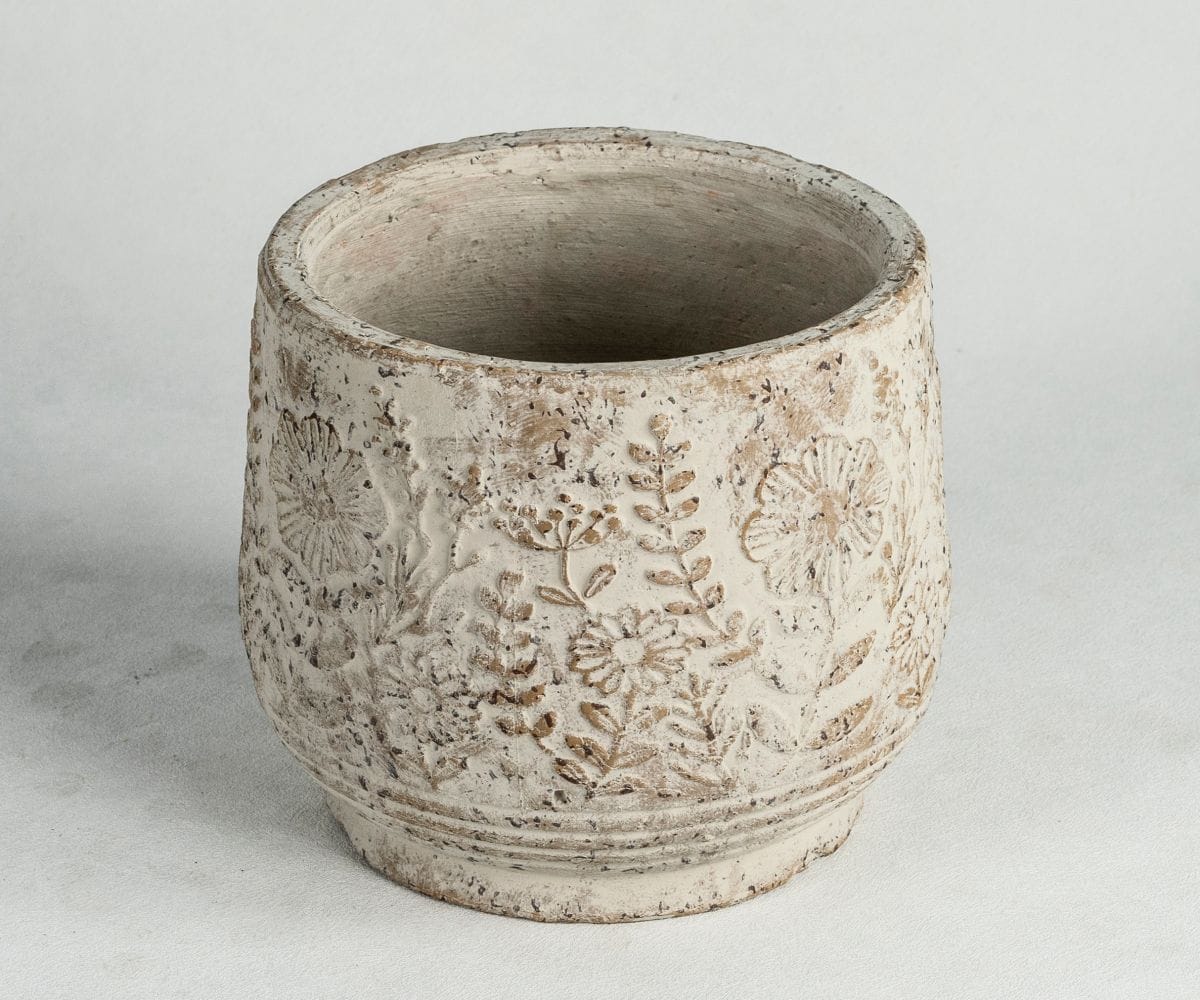
Contactar-nos
Não hesite em contactar-nos+86-13828361008
Não hesite em contactar-nossale01@santai.cn
Não hesite em contactar-nosRuyi Industrial Zone, Chaozhou, Guangdong, China



